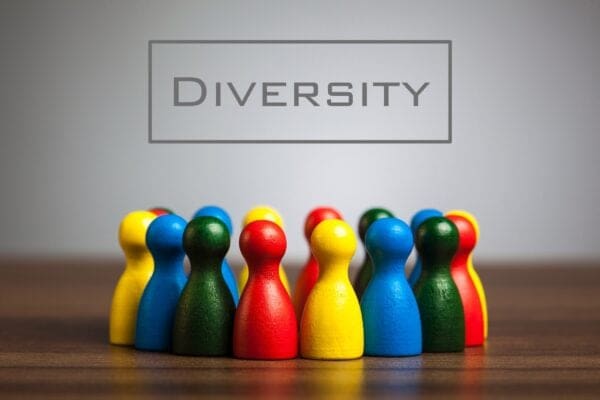Building Your Talent Pipeline In a Post Pandemic World
Talent acquisition is on the minds of all employers right now. The COVID-19 pandemic has affected businesses in so many different ways. Consequently, it has never been more critical to have the best team possible in place. But the challenges that the pandemic has thrown at us in recent months means that for many employers, filling their talent pipeline has been a puzzle – can you relate?
Entering into 2021 with the best team in place and a talent pipeline full of exceptional candidates waiting to fill upcoming vacancies is an ideal scenario, and yes – it is possible.
If your HR planning and talent acquisition strategies have dropped off your radar in recent months, this guide is for you. We cover everything you need to know about building your talent pipeline post the initial phase of the pandemic. This way, you can relax in the knowledge that you have suitable candidates lined up for the vacancies that will arise.
Your Post-COVID Business Strategy
For all organisations, the biggest challenge right now is adapting your business strategy to a world changed by the pandemic. Many industries are still recovering. For some businesses, it will be a significant time before things start to feel ‘normal’ again, vaccine or no vaccine. To come back stronger, businesses must first rethink their strategy for a post-pandemic world.
Have you revisited your business strategy for our COVID-affected world? The sector has changed in many ways.
The Following Are Points to Consider Implementing in Your Post-COVID Business Strategy:
- Building robustness and adaptability into your business: Are you financially robust? Are you reliant on a supply chain? How well are your team dealing with changes caused by the pandemic?
- The shifting conditions of the market: How have you dealt with the changes to the market? Are you prepared for any further developments that are expected to happen?
- Adapting to incorporate digital technology: Most businesses have had to adapt digitally. Whether that’s flexing to working from home or offering increased online products and services.
Once you have outlined how your business is operating now compared to before the pandemic, it is time to think about how your recruitment decisions need to change to serve your business. This is where your talent pipeline comes in.
Let’s look at what the building blocks of your talent pipeline will include.

The Importance of Your Employer Brand in the COVID Age
As your business strategy for our post-COVID world takes shape, you must then think about what this means in terms of your team of employees. The world has been changed drastically by the pandemic, and there may still be changes to come. There will be no ‘going back to normal’. It will be about adapting to our new environment, and as an employer, this means a few different things.
Sticky Learning ® is 7 times more effective than 1-day training courses. Plus, you will get a Chain of Evidence proving your Return on Investment. Discover soft skills training that changes behaviours long term.

Support Systems
Most employers have introduced support measures and systems to protect their teams from COVID-19. Despite all of the destruction caused by the pandemic, there are positives to be drawn. One success story of this year is the way that employers have stepped up and looked out for their teams.
Never before has so much thought and emphasis been put onto employee physical and mental wellbeing. This has been essential for protecting teams. It has, however, had the fortunate effect of increasing trust between employers and employees, ultimately strengthening teams.
A Flexible Approach
No-one could have predicted that such a devastating event would have had a positive effect on some businesses. Yet, everywhere you look, the pandemic has strengthened some teams.
Flexibility, remote working, a focus on mental health, and an enhanced team spirit. Those things that come from surviving a crisis have all strengthened employer brands across the board.

How have you supported your team throughout the COVID-19 crisis?
Think about the systems you put in place. Consider the changes you made to accommodate flexibility. The way you support teams both professionally and personally. All of these are the fundamentals of your post-COVID employer brand.
Communicating this to prospective candidates is an essential part of building your talent pipeline, which we will go through later in this guide.
But before that, let’s think about what kind of candidates you need to be attracting to your post-pandemic organisation. Will they be different from what you would normally seek to attract? Let’s find out.
New Candidate Profiles
Closely tied to your employer brand is your ideal candidate profile – an avatar – of the ‘type’ of individual you know will work well in your team. This goes deeper than just the skills they need to possess. It includes their attitude, their attributes and their personality type, and it can be hard to find the perfect match.
We understand how crucial it is to find employees with the right skills who will also fit into your organisation. When employers get this wrong, it leads to problems such as disruptions in the team, low morale and then ultimately having to re-hire for the same position, sometimes over and over.
When you come to make your next hires, first you must decide exactly what it is you are looking for – both the hard and soft skills, as well as attributes and attitude.
And now there is the added COVID dimension, too.
Hiring in a post-pandemic world means thinking about what skills your employees will need for the challenges that lie ahead.
Some of the Themes That We Have Seen Employers Increasingly Look for Post-COVID Include:
- Digital and technical skills for an increasingly digital world
- Cognitive skills to be able to navigate a challenging working landscape
- Emotional intelligence, which will mean the ability to stay positive, to see past challenges and to support colleagues during difficult times
- Adaptability and flexibility – and someone who approaches every task and situation with an open mind
Additionally, many businesses have changed their model recently – are you providing new or different products or services? If you know that you plan to introduce new areas or markets into your business, employing the talent with the best possible skills to allow your business to grow is essential.
Once you have your candidate profiles in place, it’s time to start building your talent pipeline – let’s look at how.
Building Your Talent Pipeline
In this section, we will look at the different elements you should consider and the strategies to build your post-COVID talent pipeline.

1. Communicating Your Value
When a prospective employee looks you up online – what do they find?
An out of date website, no reviews and social media profiles that are only updated sporadically?
Put yourself in a candidate’s position and think about how you would feel about wanting to come and work for a company which you can barely find any information about.
Candidates need to be able to visualise themselves working for your company to push them to reach out to you – and you can do this by having an excellent brand profile across various digital channels.
Update your social media regularly, and not just with brand-promoting messages. The relationship between you and potential candidates needs to be mutually beneficial. Share content and articles that they will find both engaging and useful.
2. A Focus on Health and Safety
Health and safety are at the forefront of everyone’s minds right now. Employees will not apply to places where they feel it might jeopardise their health.
Keep your website up to date with a section about careers and include an update on your website and social media to show how you are handling the ongoing COVID-19 crisis.
3. Social Proof
A key part of building your talent pipeline is your employee advocacy strategy and other social proof.
Do you have a section on your website dedicated to customer or client testimonials, reviews or employee advocacy?
In the age of the online review and even more so since COVID-19 struck, candidates want to know that you are a transparent employer whom they can trust. Employer review websites are on the rise – what does your reputation say about you? Are you a responsive employer which candidates can reach easily? Having a responsive HR team in place to build candidate relationships is a must for a successful talent pipeline.
Once you have all these elements in place to attract great candidates, your recruitment process will now work to secure your talent pipeline in place. So next, let’s look at how your recruitment process can strengthen your talent pipeline.
Your Recruitment Process
Your recruitment process typically forms the main part of your talent pipeline, as this is where you get to communicate directly with the candidates that will end up joining your team either now or in the future. This generally happens with recruiting partner like ourselves who are skilled at building talent pipelines for our clients.
1. The Job Description
Many companies re-use the same job descriptions, but this is not advised in normal times, let alone in your post-pandemic talent acquisition strategy.
Think about what you want to communicate to candidates right now and what you can offer them.
Demonstrate your adaptability and agility as a leader, highlight a focus on training and most importantly – provide clarity over the role.
In our post-pandemic world, many roles are changing and roles which have historically been the same for many years might now have added extra dimensions.
- Will your team need to have additional digital skills?
- Are you looking for employees to focus on business development to grow your company or expand into a new niche?
- Are you looking for an employee who in the future you are looking to develop to be a leader?
Think about what your ideal candidate avatar will now need to look like for our post-pandemic world – they might be very different from what you were looking for this time last year.
2. The Interview Process
Next, it’s time for your post-pandemic interview process, which for many organisations now includes video interview stages.
The role of technology in the interview process is one that has been increased since the pandemic, and again this is a great way to build your talent pipeline. Introducing a video interview stage to your recruitment process benefits both you and your prospective employees.

Having a robust video interview process will show candidates that you are an employer who is up to date with technology, able to provide flexible and remote working arrangements and is proactive.
And it also allows you to screen a higher number of candidates with a minimum amount of disruption. It shows candidates that you are serious about health and safety. Furthermore, it gives you extra insight into the candidate and their suitability for the role in question.
Video interviews are not a replacement for in-person interviews, but they will allow you to make more informed hiring decisions.
3. Candidate Aftercare
This is one of the most crucial parts of your talent pipeline, and one which gets overlooked most often.
The best candidate for any role can often be the one who you are already in contact with. Someone who has been following your company for a while. Someone who is aware of your brand and your ethos and who has a genuine interest in your business.
All too often, candidates who apply for roles in your company and are not successful are left to distance themselves and become detached from your pipeline, despite being highly valuable candidates.
In our post-pandemic world, things are changing at a rapid pace. No-one is able to predict what changes are yet to come.
Despite this being a scary prospect, there are things you can do to protect your business, and keeping in contact with the very best candidates who you know will be able to strengthen your business is a strategy which all businesses should be employing.
It is more important than ever to keep in contact with unsuccessful candidates. You never know when you are next going to need that great candidate.
Use the Following Strategies to Keep Great Candidates in Your Talent Pipeline:
- Use content to keep them engaged: If candidates follow you on social media, sharing useful content to help their career will position your company not just as a potential employer, but as an industry leader who can help them develop their career.
- Keep a priority list of candidates: For candidates who very narrowly miss out on roles, keep in contact with these more frequently. LinkedIn is a great way to stay in contact both professionally but with a human touch too. Like and share their content. Send messages and encourage communication and collaboration within your community to keep your talent pipeline engaged.
- Keep in contact regularly: Time is of the essence in our post-COVID world. Things seem to be happening at an accelerated pace. Don’t leave it months between sending emails, and you can keep it casual. Checking in to see how their job hunt is going, or to see if they’ve decided to stay in their current role will build trust and candidates will appreciate this.
As you can see, there is a lot to consider when building your talent pipeline. For some organisations who have gone through significant changes over the past few months, creating a talent pipeline will mean starting from scratch – no easy feat.
Finally, let’s look at why working with a recruiter is the fastest and easiest way to build a talent pipeline now.
Working with a Recruiter to Build Your Talent Pipeline
Working with a dedicated recruiter is still the easiest and fastest way to build a talent pipeline. They can act as an intermediary between you and the talent you want.
Many of the stages outlined in this guide get overlooked by employers, and the main reason for this is time.
Over the past few months, as businesses adapted to the challenges presented by COVID-19, many greatly reduced the amount of time they spent on recruitment and building their talent pipelines; some stopped altogether.
It is, of course, understandable that during times of crisis that employers will focus on the day-to-day running of the business. However, taking your mind off your business strategy doesn’t mean that it goes away.
Businesses still need to focus on the growth of their organisation and the strength of their team. In fact, during times of crisis is when there needs to be more of a focus than ever on the talent within your team.
Despite being otherwise excellent employers, this gives candidates a negative impression of certain companies. This is simply because they haven’t had the time to nurture relationships, leaving the trail to go cold.

When You Work With a Dedicated Recruiter to Build Your Talent Pipeline, They Will Be Able to Provide the Following:
- Work with your company to create a recruitment plan according to your business strategy. Not just for the plans you have in place, but for unexpected vacancies too. There is no better source for when you need talent in a fast-changing environment than a recruiter.
- Help you to design and build roles for your organisation. Also, help narrow down exactly what it is you need using their expertise and candidate knowledge.
- Create candidate profiles to match your roles, so you are clear on what you are looking for.
- Source the talent to match both the role and the candidate specification. No more wondering who will apply to your roles and if they will be suitable.
They dedicate time each week to keeping in contact with potential candidates. Moreover, they build a relationship behind the scenes to ensure you not only have the right talent in the right roles now when it is most critical but also to fill future vacancies seamlessly.
No employer wants to think about their top talent leaving, especially now during the pandemic. It is, however, something that needs to be planned and accounted for.
Employers who fail to build a robust talent pipeline during the pandemic will struggle to attract and retain top talent during what is the most business-critical period most of us will go through in our lifetimes.
Next Steps
What does your talent pipeline look like now?
Do you have vacancies in your team currently? Are you wondering about the future of your team? Are you aware of the talent you need in place for your organisation to succeed over the coming months and years?




